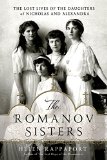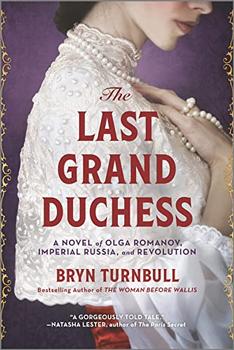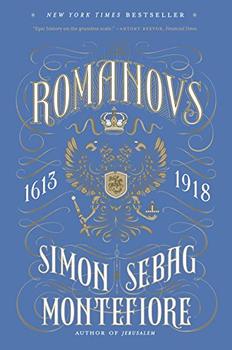Summary | Excerpt | Reviews | Beyond the book | Read-Alikes | Genres & Themes | Author Bio

The Lost Lives of the Daughters of Nicholas and Alexandra
by Helen RappaportThey were the Princess Dianas of their day - perhaps the most photographed and talked about young royals of the early twentieth century. The Romanov Sisters captures the joy as well as the insecurities and poignancy of those young lives.
They were the Princess Dianas of their day - perhaps the most photographed and talked about young royals of the early twentieth century. The four captivating Russian Grand Duchesses - Olga, Tatiana, Maria and Anastasia Romanov - were much admired for their happy dispositions, their looks, the clothes they wore and their privileged lifestyle.
Over the years, the story of the four Romanov sisters and their tragic end in a basement at Ekaterinburg in 1918 has clouded our view of them, leading to a mass of sentimental and idealized hagiography. With this treasure trove of diaries and letters from the grand duchesses to their friends and family, we learn that they were intelligent, sensitive and perceptive witnesses to the dark turmoil within their immediate family and the ominous approach of the Russian Revolution, the nightmare that would sweep their world away, and them along with it.
The Romanov Sisters sets out to capture the joy as well as the insecurities and poignancy of those young lives against the backdrop of the dying days of late Imperial Russia, World War I and the Russian Revolution. Rappaport aims to present a new and challenging take on the story, drawing extensively on previously unseen or unpublished letters, diaries and archival sources, as well as private collections. It is a book that will surprise people, even aficionados.
Helen Rappaport's book is supported by meticulous research and numerous source documents; she recreates the historical period beautifully...The book excels in informing the reader of the world events, which led to this family's death and the all too momentous events which followed the end of the Romanov's and Russia's history...This is history that reads like an engrossing novel, and once you have made the acquaintance of the four Romonov sisters, you were never, ever forget them...continued
Full Review
 (687 words)
(687 words)
(Reviewed by First Impressions Reviewers).
 From 1711 until 1917, the Winter Palace was the home to Russian Tsars, Tsarinas and their families. The need for fortified residences was lessening in the 18th century, and the palaces reflected this shift. Three distinct Winter Palaces were built, torn down and rebuilt until 1754 when the fourth and final palace was created for Empress Elizabeth Petrovna, who was the daughter of Peter the Great. Baroque in style, it sits grandly, on the bank of the Neva River in St. Petersburg. It is a majestic three-story building with a whopping 1786 doors, 1945 windows, 1057 halls and rooms, and 117 staircases. The enormity of the palace clearly symbolized the power of Imperial Russia.
From 1711 until 1917, the Winter Palace was the home to Russian Tsars, Tsarinas and their families. The need for fortified residences was lessening in the 18th century, and the palaces reflected this shift. Three distinct Winter Palaces were built, torn down and rebuilt until 1754 when the fourth and final palace was created for Empress Elizabeth Petrovna, who was the daughter of Peter the Great. Baroque in style, it sits grandly, on the bank of the Neva River in St. Petersburg. It is a majestic three-story building with a whopping 1786 doors, 1945 windows, 1057 halls and rooms, and 117 staircases. The enormity of the palace clearly symbolized the power of Imperial Russia.
 This last Winter Palace was built between 1754 and 1762. ...
This last Winter Palace was built between 1754 and 1762. ...

If you liked The Romanov Sisters, try these:

by Bryn Turnbull
Published 2022
This sweeping novel takes readers behind palace walls to see the end of Imperial Russia through the eyes of Olga Nikolaevna Romanov, the first daughter of the last tsar.

by Simon Sebag Montefiore
Published 2017
The Romanovs were the most successful dynasty of modern times, ruling a sixth of the world's surface for three centuries. How did one family turn a war-ruined principality into the world's greatest empire? And how did they lose it all?